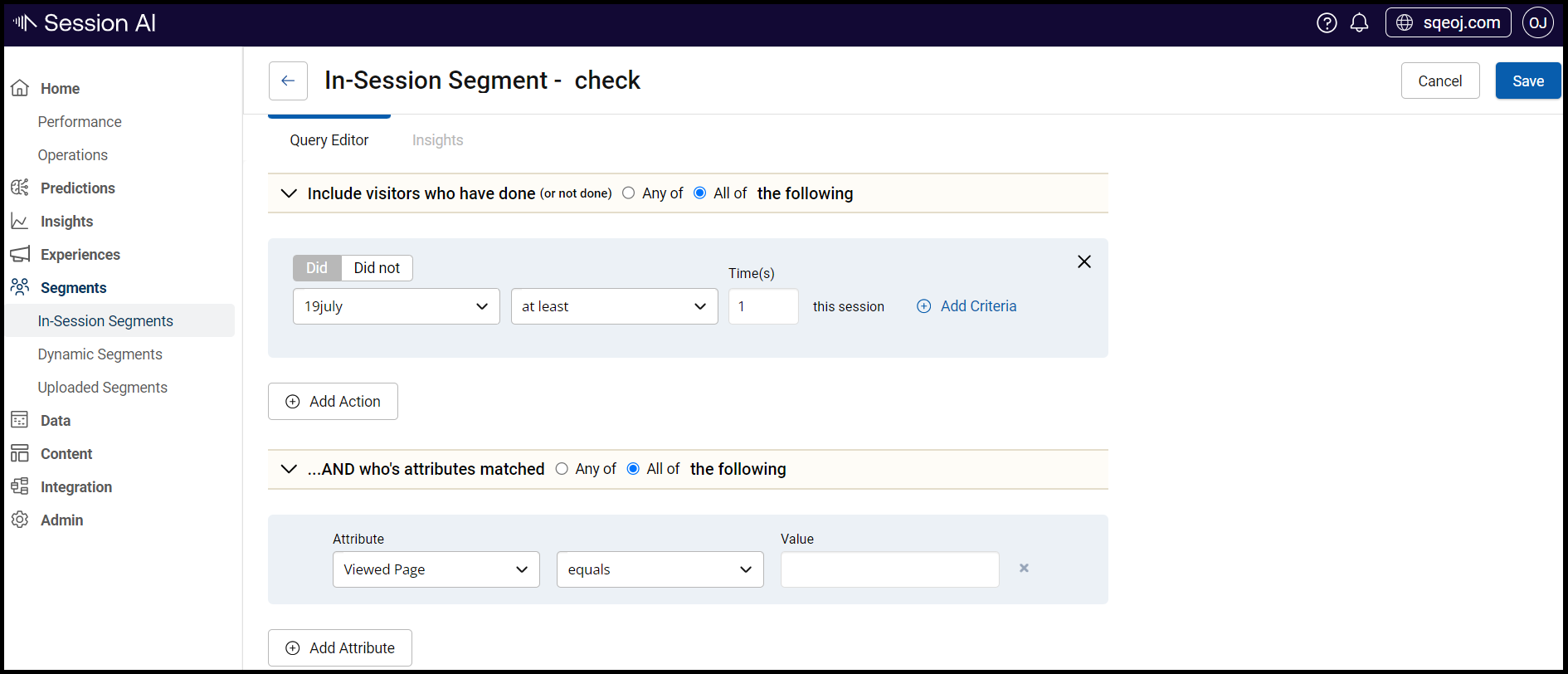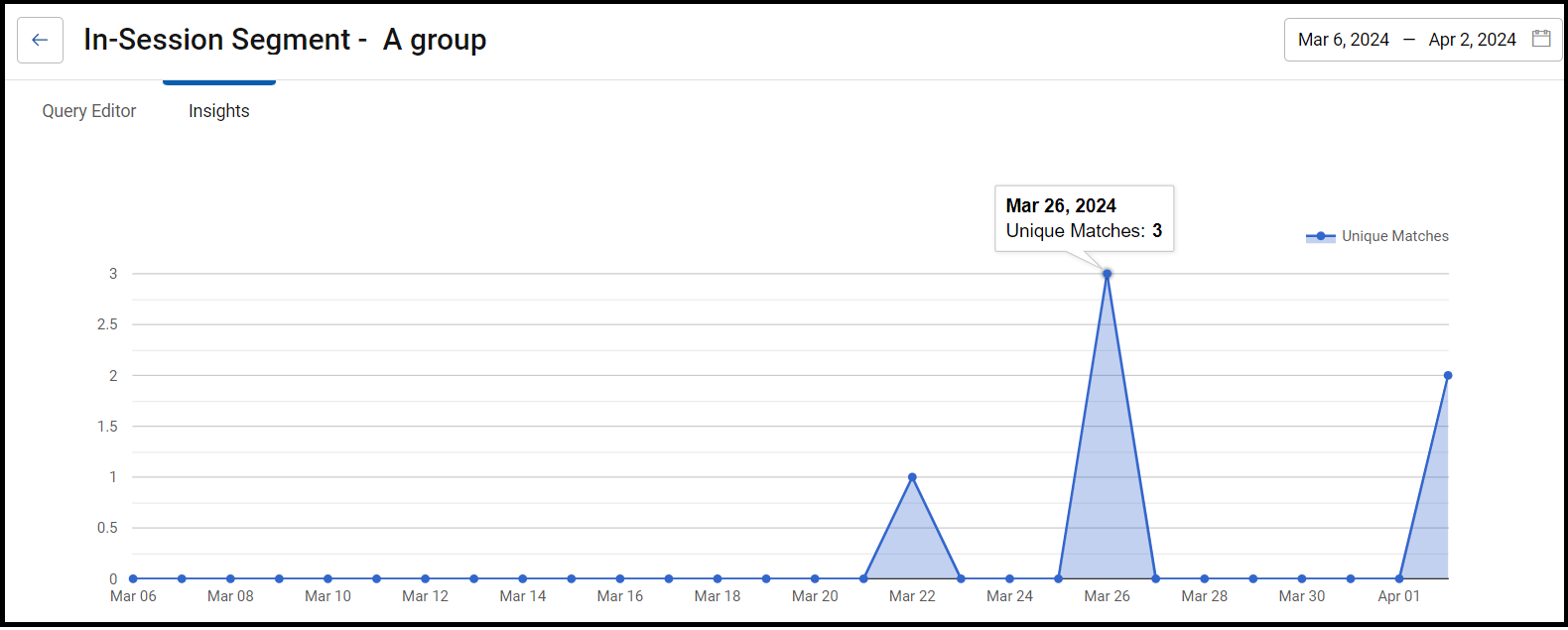In-Session Segments
The In-Session Segment allows users to define criteria based on session data. The In-session segment's Insights tab will display the session count based on these conditions.
Note: On the In-Session Segments listing page OTF, ULB, and HLB segments will be coming as OOTB for the new namespace.
Creating In-Session Segments
To create an In-session segment, follow the procedure given below:
- In the Segments menu, click the In-Session Segments sub-menu.
The listing page of In-Session Segments is displayed. - Click Create New to create a new In-session segment.
- The Query Editor tab is displayed. Provide the Unique Name for the segment
- Define rules based on various criteria extracted from the in-session data.
- Include visitors who have done: This is an Event-based criteria. It is designed for events tailored to specific criteria. Users can customize the criteria for each event using this field.
- AND who's attributes matched: This is an Attribute-based criteria. In this field, we can specify criteria based on specific profile attributes. Sessions of those who meet the defined attribute criteria will fall under the designated segment.
Note: You can use both options together.
- After defining the criteria, click Save to save the segment.

Viewing Insights
The Insights page visually represents distinctive matches or qualifying sessions, providing a concise count of each. This feature helps users to efficiently track and analyze the frequency and diversity of sessions that meet specific criteria.
To view the Insight of the created In-session segment, follow the procedure given below:
- In the Segments menu, click the In-Session Segments sub-menu.
The listing page of In-Session Segments is displayed. - Click the segment name from the listing page for which you want to view the insights.
- The Query Editor tab is displayed. Click Insights tab for the segment
- The graph representation of the created criteria will be displayed for the selected time range.

Note: Hover over the graph to get the date and unique matches for the segment.
Updated 7 months ago